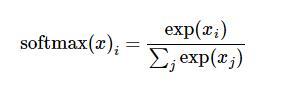python3 字符串/列表/元组(str/list/tuple)相互转换方法及join()函数的使用
在抓取网络数据的时候,有时会用正则对结构化的数据进行提取,比如 href="https://www.1234.com"等。python的re模块的findall()函数会返回一个所有匹配到的内容的列表,在将数据存入数据库时,列表数据类型是不被允许的,而是需要将其转换为元组形式。下面看下,str/list/tuple三者之间怎么相互转换。
class forDatas:
def __init__(self):
pass
def str_list_tuple(self):
s = 'abcde12345'
print('s:', s, type(s))
# str to list
l = list(s)
print('l:', l, type(l))
# str to tuple
t = tuple(s)
print('t:', t, type(t))
# str转化为list/tuple,直接进行转换即可
# 由list/tuple转换为str,则需要借助join()函数来实现
# list to str
s1 = ''.join(l)
print('s1:', s1, type(s1))
# tuple to str
s2 = ''.join(t)
print('s2:', s2, type(s2))
str转化为list/tuple,直接进行转换即可。而由list/tuple转换为str,则需要借助join()函数来实现。join()函数是这样描述的:
"""
S.join(iterable) -> str
Return a string which is the concatenation of the strings in the
iterable. The separator between elements is S.
"""
join()函数使用时,传入一个可迭代对象,返回一个可迭代的字符串,该字符串元素之间的分隔符是“S”。
传入一个可迭代对象,可以使list,tuple,也可以是str。
s = 'asdf1234' sss = '@'.join(s) print(type(sss), sss)
总结
以上所述是小编给大家介绍的python3 字符串/列表/元组(str/list/tuple)相互转换方法及join()函数的使用,希望对大家有所帮助,如果大家有任何疑问请给我留言,小编会及时回复大家的。在此也非常感谢大家对【听图阁-专注于Python设计】网站的支持!
